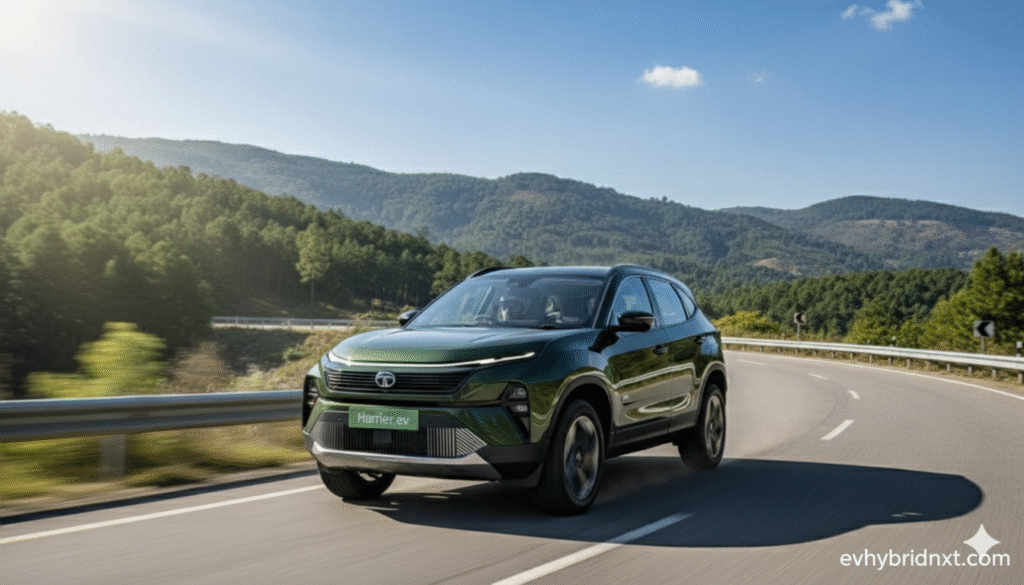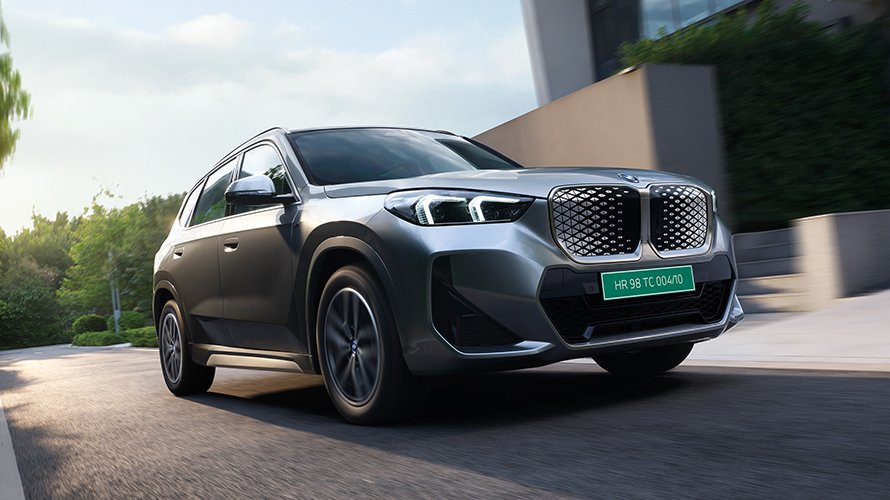Tata Motors has made headlines with its latest electric offering, the Harrier EV—a bold evolution of the popular Harrier SUV into a dual-motor all-wheel-drive (AWD) powerhouse. Boasting a 74.61kWh battery pack and a claimed range of 622km on a single charge, it promises to redefine long-haul EV travel in India. But in the world of electric vehicles, manufacturer figures often shine brightest in lab conditions, leaving buyers wondering: how does it stack up on actual Indian roads? To answer that, we took the Harrier EV on a no-frills test drive along one of the country’s most iconic routes—the Mumbai-Pune Expressway—pushing it through traffic, highways, and everyday creature comforts without babying the accelerator.
Test Setup: Mimicking the Daily GrindOur route: A round trip from South Mumbai to Pune’s bustling Kalyani Nagar, clocking approximately 170km one way and 340km total. This stretch is a perfect EV stress test—urban crawl out of Mumbai, sweeping expressway speeds, and the gentle inclines of the Western Ghats. We didn’t chase hypermiling tricks; instead, we replicated a typical family outing.
- Starting Conditions: Full 100% state of charge (SoC), Normal drive mode, air-conditioning at 24°C in Econ mode, ventilated seats on, infotainment blasting a playlist, and two passengers plus light luggage aboard.
- Driving Style: Regenerative braking at Level 1 for light traffic, steady 100kph cruising (the legal limit), no cruise control to avoid constant dual-motor engagement. The Harrier EV’s setup is clever here: it primarily relies on the efficient rear permanent-magnet motor for everyday propulsion, summoning the front induction motor only for extra grip or punch.
Right from the gates in South Mumbai, the trip computer optimistically pegged the range at 437km—already a far cry from Tata’s 622km ARAI-certified figure, but more in line with what we’d expect in mixed conditions.
The Outbound Leg: Mumbai to Pune
Kicking off amid light morning traffic, the Harrier EV glided smoothly onto the Expressway. The instant torque from its dual motors made overtakes effortless, yet we kept things measured to reflect real-user habits. No aggressive launches or detours—just steady progress with the AC humming and seats cooling our backs.
By the Khalapur Toll Plaza—91km in—the SoC had dipped to 79%, with the onboard computer logging an average consumption of 177Wh/km. That’s solid efficiency for a 4.8-meter AWD SUV weighing over 2 tons, translating to about 5.65km per kWh. Energy used so far: roughly 15.7kWh, or 21% of the battery, aligning neatly with our steady 100kph clip.
Pushing on through the Ghats, the terrain added a slight challenge. The road’s curves and elevation changes occasionally nudged the front motor into action for better traction, but regen braking clawed back some juice on descents. We hit Lonavala (around 110km) with 76% SoC, consumption holding at 178Wh/km—minimal variance, thanks to the Expressway’s forgiving grades.
As Pune’s outskirts loomed, the urban sprawl kicked in. Navigating Kalyani Nagar’s side streets meant more stop-start action, dipping the SoC further. Arrival at 170km: 59% remaining, average consumption now at 180Wh/km. The trip computer revised the estimated range to 410km—still healthy for the return, but underscoring how city ingress eats into efficiency. Total energy draw: about 31.5kWh, leaving us with a comfortable buffer for the way back.
The Return Journey: Pune to Mumbai
Lunch in Pune, a quick top-up of driver energy (no charger pit stop), and we reversed course. Conditions mirrored the outbound: AC on, tunes playing, passengers chatting. But afternoon traffic thickened near Mumbai, testing the Harrier’s one-pedal driving nuances.
Back through the Ghats at 165km into the total trip (95km from Pune), SoC sat at 42%, with consumption creeping to 182Wh/km—blame the headwinds and a few spirited merges. The dual-motor AWD proved its worth here, distributing power seamlessly without drama, though we noted the system sips more when both motors hum together.
By Khalapur again (total 261km), we were at 28% SoC, averaging 184Wh/km overall. The Expressway’s tail-end crawl into Mumbai added the final insult: bumper-to-bumper snarls that regen couldn’t fully offset. Pulling into South Mumbai at 340km: 18% SoC left, final average consumption 185Wh/km. Energy expended: about 56.9kWh, or 76% of the pack. At this rate, a full depletion would yield around 402km—impressively close to our initial estimate, but still 220km shy of Tata’s claim.
Pushing to the Limit: Full Range Verdict
Curious to chase the battery to zero without stranding ourselves, we detoured onto Mumbai’s coastal roads for an extra 62km loop—think Bandra-Worli Sea Link vibes at dusk. Keeping the same setup, efficiency held steady at 186Wh/km. The Harrier EV nursed its final electrons admirably, with the low-SoC warnings flashing only in the last 5km. Turtle mode engaged gracefully, capping speed but preserving crawl-home capability.
Final tally: 402km on a single charge under these “normal” conditions. Extrapolating from the 74.61kWh pack at 185Wh/km average, that’s spot-on. For context, this beats many rivals in the premium EV SUV space, where real-world figures often hover 20-30% below claims.
Tata’s 622km MIDC figure? It’s ambitious, optimized for ideal lab cycles with no AC, minimal load, and hyper-efficient driving. In our test—mirroring a relatable weekend jaunt—we landed at 65% of that promise.
What Influences the Numbers?
Several factors shaped our result:
- Load and Accessories: Two adults, luggage, constant AC, and infotainment added ~10-15% drain compared to solo, eco-only runs.
- Route Mix: 60% highway (efficient at 100kph) vs. 40% city/Ghats (thirstier due to stops and inclines).
- AWD Overhead: The dual-motor setup shines for handling but costs 5-8% efficiency versus rear-wheel-drive peers.
- Weather and Tires: Mild October temps (no extreme heat) and stock eco tires helped; summer swelter could shave another 20km.
Tata could nudge real-world closer to claims with software tweaks—like smarter motor blending or enhanced regen—but for now, expect 380-420km in varied use. Fast charging mitigates range anxiety: 20-80% in 30 minutes at 150kW DC stations.
Bottom Line: Realistic for Most, Revolutionary for EVs
The Harrier EV doesn’t quite hit 622km in the wild, but 402km on our Mumbai-Pune loop proves it’s no slouch. With punchy performance (0-100kmph in under 7 seconds), a plush cabin, and Tata’s Acti.ev platform perks like vehicle-to-load, it cements the brand’s EV leadership. For highway warriors eyeing the 21-lakh starting price, this range means fewer stops and more sips of chai en route. Tata’s claim might stretch the truth, but the Harrier EV delivers on the drive—electrifying India’s roads, one realistic kilometer at a time.



